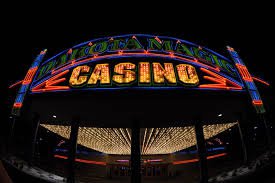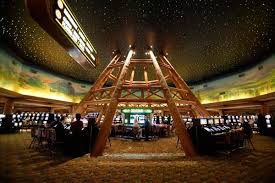Popularity of Tribal Casinos

Native American casinos in the United States and those that are operating in Canada may have similarities, but they also have many differences. In the United States, Indian gaming is a booming industry of $29.9 billion, with 240 tribes operating almost 500 casinos throughout the country. In Canada, the industry is not nearly as large and there are less than 20 casinos that are located in five provinces. There are also limited VLT (video lottery terminal) palaces in another province, and combined, these have a gross revenue of just $1 billion. As for US American Indian casinos, the gaming industry involves many tribal communities and in Canada, the gaming effects are a bit similar, but are far less substantial.
Gaming Laws for Tribal Casinos
The gaming laws for Indian casinos located in the United States and those in Canada are quite different and there are also different regulations. For First Nation gambling establishments, there are three ways in which these are regulated. The first is that a community can apply for a casino license as a charity. Another is that the community can create an agreement with a host province to operate a casino, which is similar to how US Tribal Casinos operate. The third is to obtain a gambling license that is non-charitable and allows gambling activities to take place under a licensing body.
In the US, the Indian Gaming Regulatory Act is a law that was passed in 1988 that governs Indian gaming and offers a legislative basis for the operation of Native American casinos. There are three classes of gaming offered to Indian casinos. Class I is traditional Indian gaming, Class II is in regards to games of chance like bingo and slots and Class III is all gaming, including Vegas style casino games.
Similarities in Tribal Casinos

Tribal casinos have many similarities, regardless of where they are being operated. In the US and Canada, casinos that are Native-owned will offer a large array of games and the largest casinos will have a full list of games, from slots to table and card games. The casinos are similar in design as well, each offering the glitz and glamour that players desire when they enter a gaming establishment. Security is also tight at all tribal casinos to prevent cheating, and there are always measures in place to keep players safe when they are engaging in real money gambling action. See for yourself on the casinoonline-ca.com site; Spintropolis is a Canadian casino that claims to be the oldest native American ran establishment in the country. Here you can read all about their current player promotions and the various casino games you can play for free.
Major Differences Between US and Canadian Indian Casinos
There are not many differences between US and Canadian tribal casinos regarding what they offer and the experience they provide. The main differences come with the number of operating casinos. As mentioned, the US has far more casinos offered to players while Canada struggles to maintain less than 20 casinos. One of the huge differences is the allowed locations of such native casino establishments. First Nations gaming casinos are required to be constructed in reserve communities. In the US, the IGRA required tribal casinos only to be located on Indian lands, which provides the US with a benefit of being able to locate casinos near large cities that will attract more players and generate more revenue. Another key difference lies with the policies on Indian gaming. In the US, the IGRA and the federal policy goals were designed as a means to strengthen the tribal economy and government. On the flip side, in Canada, the law turns more towards provincial authority over gaming, and there are no clear guides as to policy goals to strengthen First Nation communities.
